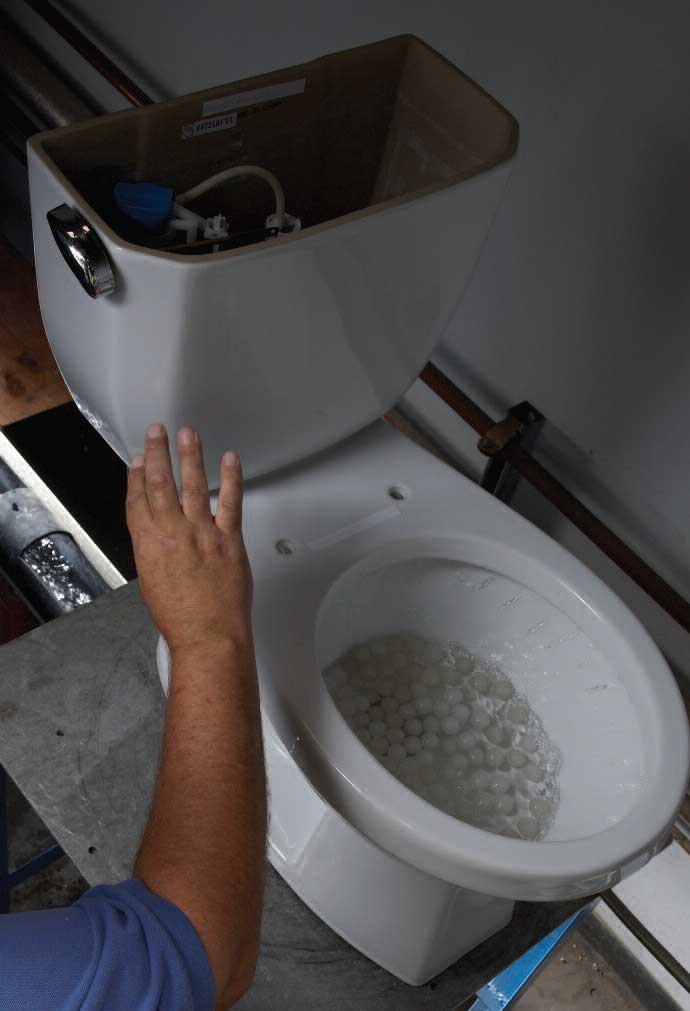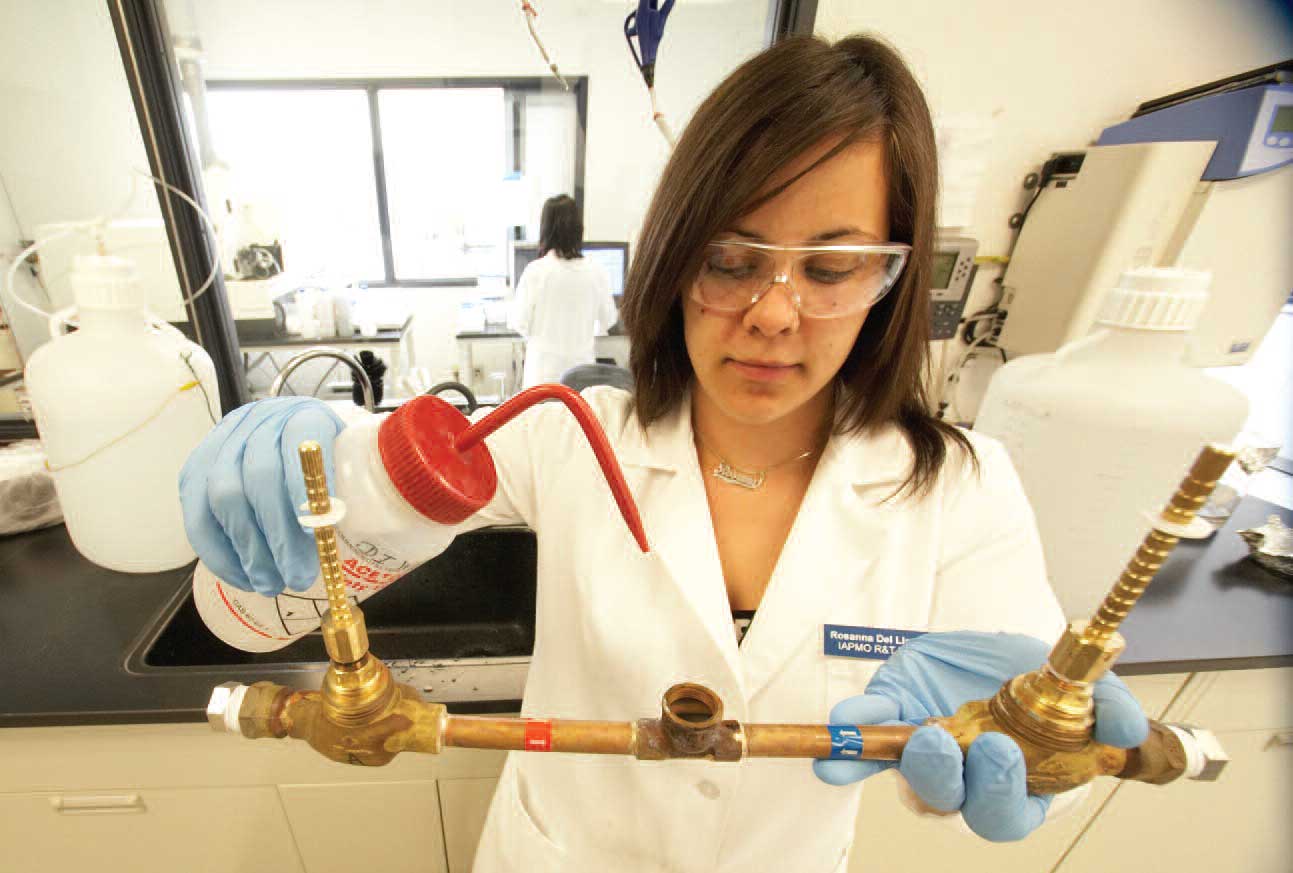When you ask someone, “What does certification mean?” most people will simply say, “To certify a product.” The term “certification” actually means much more. It all starts with an accredited organization composed of many dedicated people with various functions. Some people will be active in standards organizations to stay on top of what changes are made, to make sure a product performs the way it should, as well as to make sure the public’s health and safety needs are met. Other engineers will be in charge of reviewing test reports for new listings and making sure they comply with the required standards and plumbing code. Compliance personnel will make sure listings are up to date and in compliance with the listing program requirements. Inspectors are also a big part of the organization. The remainder of the certification group includes, but is not limited to, project managers, directory listing personnel, international client listing administrators, and travel organizers. When you combine all of these together, you can say your product is certified or listed.
Before the certification process takes place, you must start at the initial step of “testing your product.” IAPMO R&T Lab is a knowledgeable, fast, one-stop shop for your testing and certification needs. With years of experience in the plumbing industry, the IAPMO R&T Lab can evaluate a wide variety of products to a range of domestic and international standards. If the products are too big to ship or if you have numerous samples to ship, that’s not a problem We can come to you with our Witness Testing Program.
If you look at most manufacturers, you will find in place an active quality assurance program that is administered by an in-house QA manager. Each program is specific for that production facility to make sure that all phases of production will be in compliance, from safety to manufacturing. So how does a manufacturer make sure his product stays in compliance with the quality assurance system? The primary indicator is if they utilize a quality control system. Samples will continually be selected either from stock or during the production process to perform specific tests. These could be anything from measurements to markings. If they don’t have the capabilities to perform quality control checks, this can be done by outside sources. Quality control testing is another service offered by IAPMO R&T Lab. So why would you want to perform periodic quality control checks? Reasons range from reducing product returns and liabilities in the field to increasing your company’s reputation for making a quality product.

Another important factor is finding a good partner for your testing needs. A manufacturer might do all testing for research and development, evaluation, quality control, and failure analysis using an in-house laboratory; however, having a reputable independent third-party testing laboratory to validate your results is essential.
Other manufacturers might choose to subcontract all the testing needs to a third-party test laboratory. Whatever method a manufacturer chooses, having a partner who knows your products well or specializes in the proper field will give extra benefits.
So, to produce and market a quality product, you should follow these simple steps:
• Have a quality assurance system in place.
• Per form quality control on the manufacturing process.
• Have the product tested to the latest standard.
• Have your product listed in an independent third-party certification program.
Product certification means continuous compliance of products to a code, standard, and/or a protocol. Is product testing by third-party laboratories the same as product listing? The answer is no. If a product is tested, it only means that the tested product has met the requirements of a code or standard. It does not mean that other like products produced by the same manufacturer are in compliance.

When a product is certified, it goes through rigorous evaluation. Test reports, drawings, calculations (if applicable), and other pertinent information are evaluated. Moreover, the manufacturing locations that produce such products are evaluated. The evaluation of the locations includes, at a minimum, the evaluation of the quality assurance system, personnel, and equipment.
The Uniform Plumbing Code in section 301.1.1 states: All pipe, pipe fittings, traps, fixtures, material and devices used in a plumbing system shall be listed or labeled (third-party certified) by a listing agency (accredited conformity assessment body); and
• Shall conform to approved applicable recognized standards referenced in this code; and • Shall be free from defects.
An accredited conformity assessment body or a third-party certification agency is one that has shown proof of compliance to the requirements of ISO/IEC Guide 65 or equivalent documents (such as CAN P-3/CAN P-1500). The agencies that have evaluated and accredited IAPMO R&T to the aforementioned requirements are the American Standards Institute (ANSI) and the Standards Council of Canada (SCC). Such agencies maintain requirements above and beyond these documents.
In order to comply with the aforementioned documents, a Conformity Assessment Body (CAB) must comply with many requirements, a few of which are outlined below:
1. Policies and procedures that are nondiscriminatory and are administered in a nondiscriminatory manner.
2. Accessible services to all applicants whose activities fall within its declared field of operation.
3. Use of standards and protocols in compliance with the requirements of ISO/IEC Guide 7.
4. Quality assurance system in compliance with the requirements of ISO/IEC Guide 65.
5. Internal audits and management review.
6. A compliant surveillance system that must provide for periodic evaluation of marked products to confirm continuous compliance to conform to a code standard or protocol.
Why is product testing and certification important? Manufacturers and Authorities Having Jurisdiction can rely on IAPMO R&T certification marks as an indication that the product conforms to all applicable standards. Look for the IAPMO R&T marks of conformity on all plumbing, mechanical, and building products before approving for installation.

Ken Wijaya
Last modified: July 14, 2023

